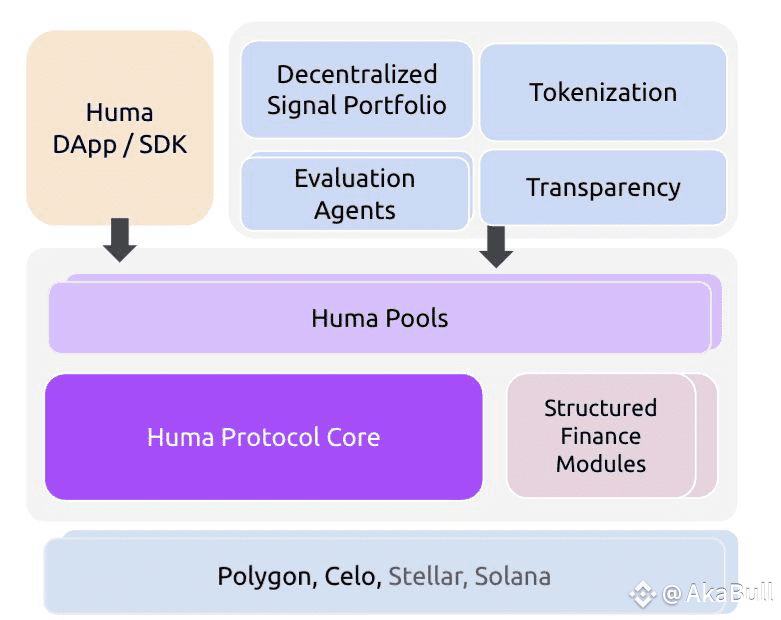Imagine a world where your future income, invoices, or recurring payments can instantly unlock liquidity without going through banks. That’s what @Huma Finance 🟣 is building — a protocol that merges structured finance with blockchain rails.
Breaking Down the Layers
User Access Layer (Huma DApp / SDK)
Anyone — from developers to businesses — can plug into Huma’s infrastructure to create or access financial applications. Think of it as an API for the future of decentralized finance.
Signal & Trust Layer (Decentralized Portfolio, Evaluation Agents, Transparency)
Decentralized Signals: Real-world financial signals (payment history, on-chain activity, invoices, payroll) feed into the system.
Evaluation Agents: AI + oracles assess borrower credibility, reducing fraud and improving capital efficiency.
Transparency: Every decision and movement is verifiable on-chain — no hidden credit scores or opaque loan processes.
Liquidity Layer (Huma Pools & Tokenization)
Borrowers tokenize real-world receivables or income, and lenders provide liquidity via pools. This design allows capital to flow efficiently, while risk is distributed across structured pools.
Protocol Core & Finance Modules
Huma Protocol Core: Governs lending logic, repayment flows, and ensures fairness across transactions.
Structured Finance Modules: Create advanced instruments — from factoring and yield products to customized credit baskets.
Multi-Chain Deployment
By launching on Polygon, Celo, Stellar, and Solana, Huma ensures global reach, low-cost transactions, and compatibility across ecosystems.
Why It Matters
For Individuals: Freelancers or gig workers can tokenize future invoices and access instant liquidity.
For Businesses: SMEs can unlock working capital without going through lengthy bank approvals.
For Investors: Yield opportunities backed by real-world financial flows, not just speculative DeFi tokens.
The Big Picture
#HumaFinance is pioneering PayFi — a blend of payments and DeFi — and is positioning itself as the protocol that powers real-world credit on-chain. By creating transparent, decentralized, and programmable financial infrastructure, Huma bridges the $100T+ traditional credit markets with Web3 liquidity.
Final Take:
Huma Finance is not just another DeFi project. It’s the on-chain equivalent of Wall Street’s credit markets, reimagined for a decentralized, multi-chain, and user-owned future.

